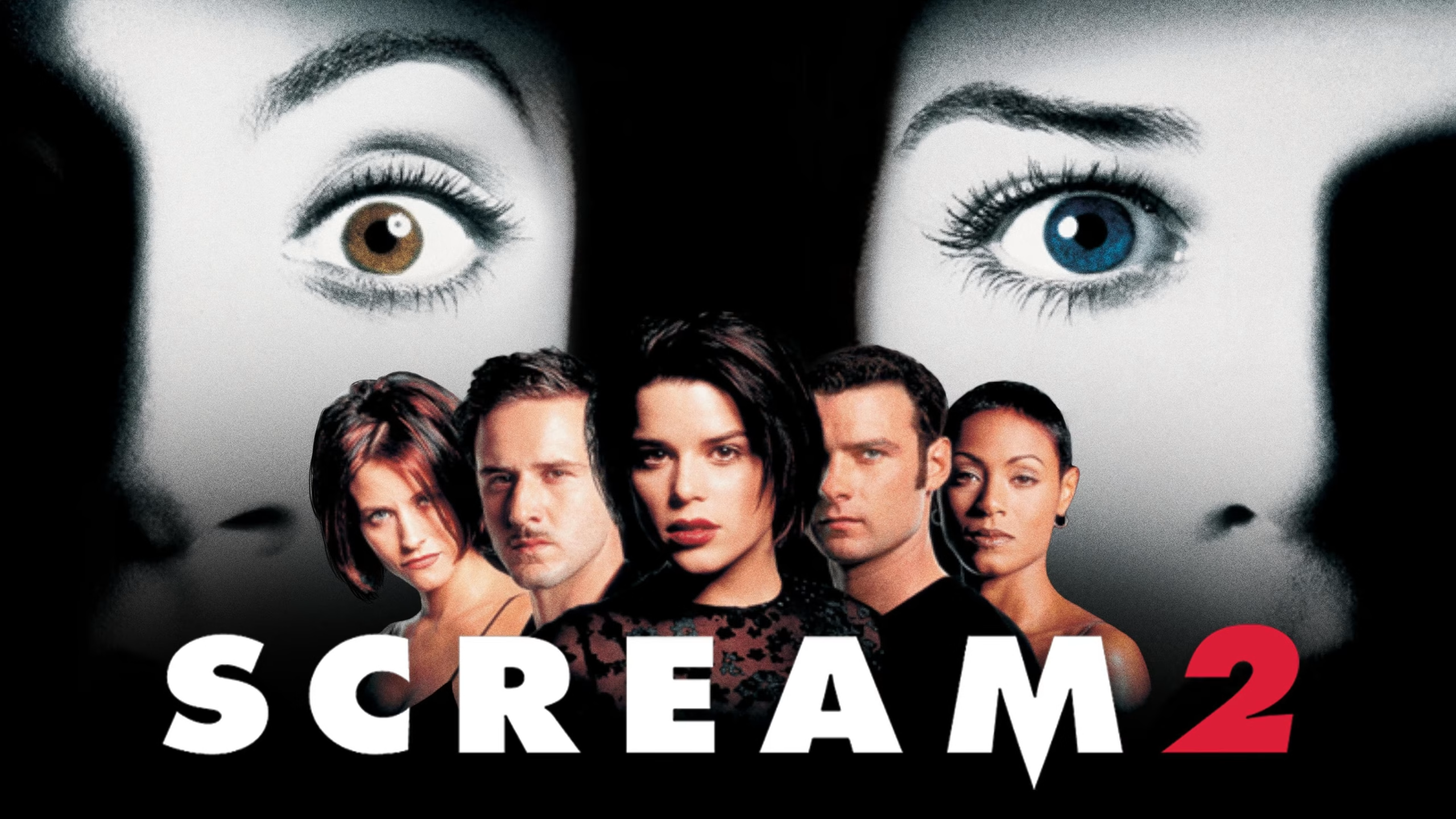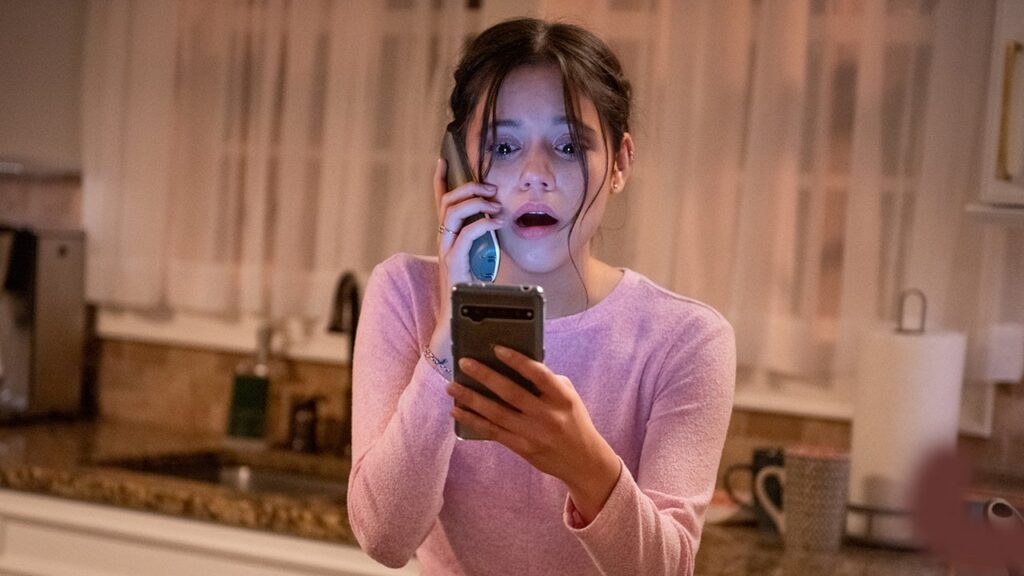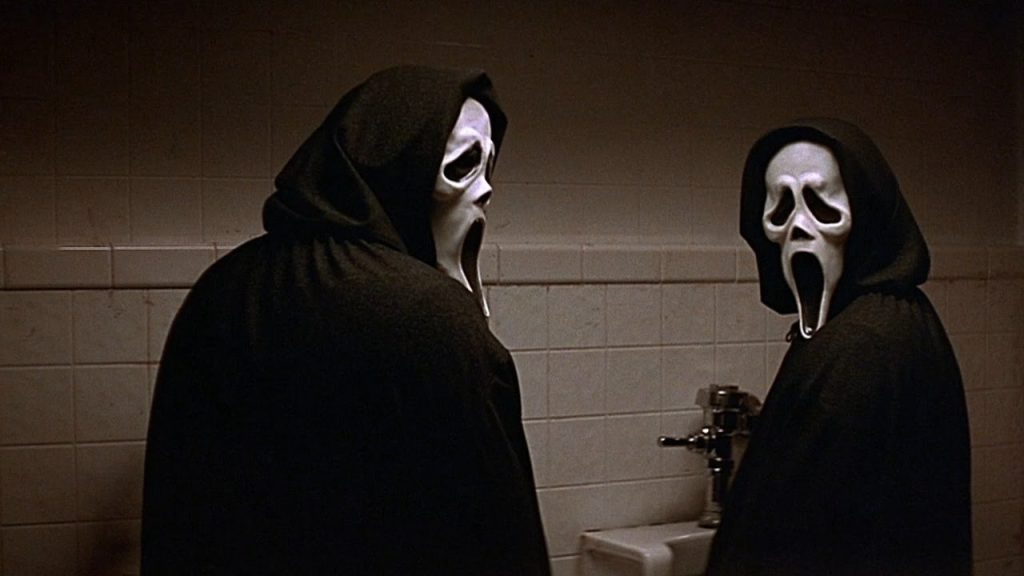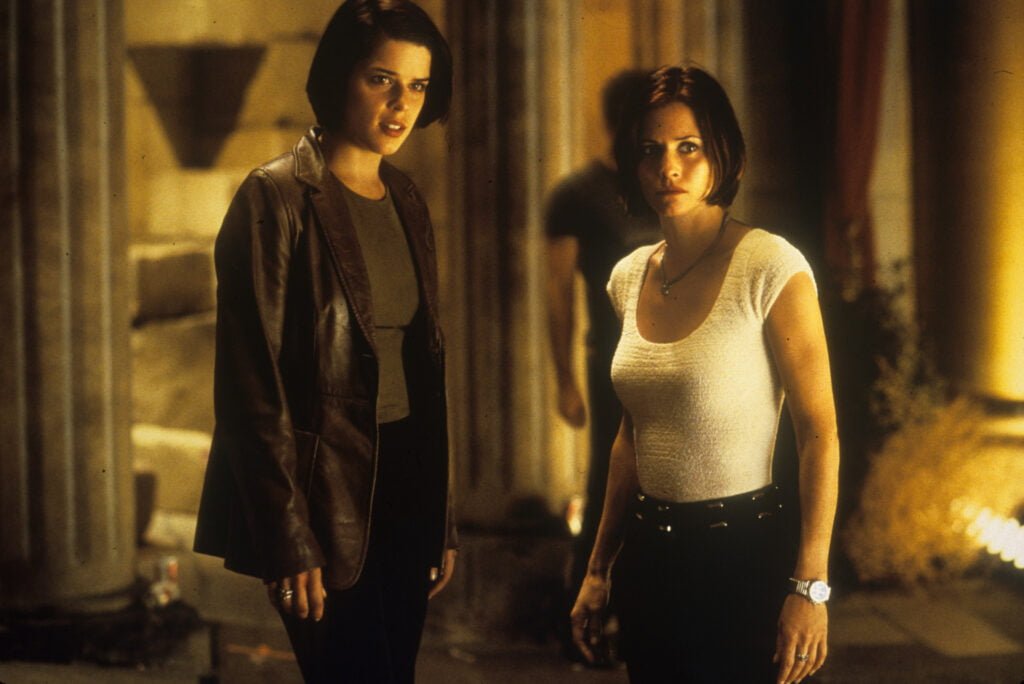Editorials
Healing Powers: Elizabeth Sankey’s ‘Witches’ (2024)
Elizabeth Sankey, writer and director of Witches, was institutionalized due to postpartum psychosis. Prior to her hospital admission, she found a group of women on WhatsApp with whom to air her fears about being a mother. All women in the group had a history of pregnancy or trying to become pregnant. All would be, by our strict social ideals, bad women: the WhatsApp coven included women with thoughts of killing their children and themselves.

“Are you a good witch or a bad witch?”
What a horrible question.
In our society, steeped in patriarchal values, this question implies that a woman, the witch, is either behaving or misbehaving, obeying or disobeying. The question limits women in who they are and what they could become. Film has much to do with social and cultural perceptions of what a woman should be. The horror genre, especially, has had the ability to imprint itself on popular culture and mold social ideas of a “good” woman and “bad” woman. “Good” women, often Final Girls, traditionally abstain from sex, drugs, and alcohol; they are down to earth, amicable, and care about others, oftentimes more than themselves. Their opposites, the bad women, are outcasts, messy, and complicated. Their distinctions are always obvious, even color-coded. Though The Craft (1996) brought a chicness to the teenage witch, by the film’s end, the bad witch, Nancy, is institutionalized, left writhing enchained in her bed, incoherently yelling. This was the fate of many “bad” women. Remove them from society, as they are uncontrollable. The witches must be burned.
Elizabeth Sankey, writer and director of Witches, was institutionalized due to postpartum psychosis. Prior to her hospital admission, she found a group of women on WhatsApp with whom to air her fears about being a mother. All women in the group had a history of pregnancy or trying to become pregnant. All would be, by our strict social ideals, bad women: the WhatsApp coven included women with thoughts of killing their children and themselves.
Who can we trust?
Motherhood is a tricky subject. American history has shown that while we need mothers, their lives are often overlooked, the baby taking center stage. The opinions and fears of mothers are left to the wayside, resulting in feelings of isolation and anxiety. After all, pregnancy can be life threatening, and is in no way as clean as it had been presented on film for decades. The maternal mortality rate has hardly changed since 2019, with approximately nineteen deaths per 100,000 live births, according to the CDC. In 2021, according to the American Medical Association, the Black maternal mortality rate was 2.6 times higher than white mothers. Suicide is a leading cause of death for recent mothers. Sankey correlates medical shortcomings, bias, discrimination, and lack of mental health resources with the skepticism women feel when sharing pregnancy-related mental struggles with doctors. Crucially, Sankey urges that guilt and shame are preventing women and those capable of pregnancy from getting the help they need, fearful they will be judged and labeled as “bad mothers,” or worse, their children are taken away from them. There is a historical basis for this, with links to 17th century America.
“Embroidered on our bones”
Sankey includes several testimonies from victims of the Salem Witch Trials, many of whom were town herbalists, midwives, and healers. These women were the ones who helped others give birth and cared for them during their healing process. However, if you were socially linked to a perceived witch during the trials, you too could be implicated. The lessons that had been learned from those trials and the hundreds of others across America in the 17th and 18th centuries were not to trust a healing woman.
Sankey posits that many perceived witches of Salem suffered from various mental illnesses, leaving them vulnerable to discrimination from accusing townspeople. No longer was the healing women counted upon for birth assistance — that was now the domain of male doctors. For centuries since, women have been taught to police their neighbors and friends, lest they be accused of being “bad.” Those accused suffered the social, physical, and mental consequences. There is hope for mothers when covens are reclaimed. Once perceived as wild women celebrating the devil and conjuring demons, the coven can and should be a source of not only support, but guidance.

The Spellbook
Sankey breaks her documentary down into five chapters. In the form of spells, she outlines how to survive maternal madness. She calls on viewers to “fall into madness,” “step into the circle,” “speak your evil,” “invoke the spirits,” and, finally, “embrace the witch.” I posit, however, that her most important spell is the third. Speaking your evil is extremely daunting. One woman in particular admitted to frightening thoughts of sexually harming her child as a result of maternal OCD. “It was torture,” she stated. She chose self-harm instead of sharing these uncontrollable thoughts with anyone, let alone other mothers. Sankey, herself battling murderous thoughts from postpartum depression, felt as though she was in her own horror film, with an overwhelming sense of doom – “Living, breathing terror.” She told no doctor of the “hideous scenes” playing in her head. Instead, she looked inward. Am I evil? The WhatsApp coven sprang to action to get Sankey help when she revealed she had suicidal thoughts after days without sleep. “If we didn’t, who would?”
The medical center where Sankey was admitted was for mothers and their children. She was stripped of any potential harmful belongings, and then left alone with her child. This was extremely unsettling and traumatic for the other mothers, with some revealing it was their “biggest fear.” Under 24/7 surveillance, the therapy began. “Now,” Sankey states, “I was surrounded by witches.” These women became each others’ support, and the doctors worked through patients’ perinatal mental health issues. Removed was the stigma of “bad” motherhood. The testimony from Sankey and her fellow patients is raw, real, and frightening. Stepping into the circle requires tremendous strength and trust.
Embrace the Witch
I want to be a mother, but I am scared. As with most of my fears, I turn to horror films to sort myself out. I think of Rosemary Woodhouse, whose own husband assaulted her, and, like a patient named Dr. Cho, saw the devil in her child’s eyes. She was gaslit, denied care, and almost died during the early months of her pregnancy. After birth, she was discarded. She was no longer of use, though she was granted permission to raise the spawn of Satan. She had no agency or autonomy. This is what scares me most, as I have heard too many horror stories of women not being believed. Worse, as someone living with a mental illness, I worry I will be perceived as a “bad” mom.
In the US, findings from the 2020 Maternal Behavioral Health Policy Evaluation (MAPLE) study show “2683 out of 595,237 insured mothers aged 15 to 44 across the US had suicidal ideation or thoughts of self-harm […] the greatest increases seen among Black; low-income; younger individuals; and people with comorbid anxiety, depression, or serious mental illness.”
What if my depression becomes unbearable after giving birth? What if I have thoughts of harm? What if I become a statistic?
It was Sankey who, despite the harrowing testimony, calmed me. I know I can look to my sisters. Witches is a cathartic documentary, with empathy at its core. I urge my fellow mothers-to-be to join the coven, to embrace the witch. Embracing the witch means to heal — to shed society’s expectations of “good” motherhood. You are enough. And you are certainly not alone.
To hell with “good” and “bad,” so long as you are a witch.
You can stream Witches on Mubi.
Editorials
‘The Woman in Black’ Remake Is Better Than The Original

As a horror fan, I tend to think about remakes a lot. Not why they are made, necessarily. That answer is pretty clear: money. But something closer to “if they have to be made, how can they be made well?” It’s rare to find a remake that is generally considered to be better than the original. However, there are plenty that have been deemed to be valuable in a different way. You can find these in basically all subgenres. Sci-fi, for instance (The Thing, The Blob). Zombies (Dawn of the Dead, Evil Dead). Even slashers (The Texas Chainsaw Massacre, My Bloody Valentine). However, when it comes to haunted house remakes, only The Woman in Black truly stands out, and it is shockingly underrated. Even more intriguingly, it is demonstrably better than the original movie.
The Original Haunted House Movie Is Almost Always Better
Now please note, I’m specifically talking about movies with haunted houses, rather than ghost movies in general. We wouldn’t want to be bringing The Ring into this conversation. That’s not fair to anyone.
Plenty of haunted house movies are minted classics, and as such, the subgenre has gotten its fair share of remakes. These are, almost unilaterally, some of the most-panned movies in a format that attracts bad reviews like honey attracts flies.
You’ve got 2005’s The Amityville Horror (a CGI-heavy slog briefly buoyed by a shirtless, possessed Ryan Reynolds). That same year’s Dark Water (one of many inert remakes of Asian horror films to come from that era). 1999’s The House on Haunted Hill (a manic, incoherent effort that millennial nostalgia has perhaps been too kind to). That same year there was The Haunting (a manic, incoherent effort that didn’t even earn nostalgia in the first place). And 2015’s Poltergeist (Remember this movie? Don’t you wish you didn’t?). And while I could accept arguments about 2001’s THIR13EN Ghosts, it’s hard to compete with a William Castle classic.
The Problem with Haunted House Remakes
Generally, I think haunted house remakes fail so often because of remakes’ compulsive obsession with updating the material. They throw in state-of-the-art special effects, the hottest stars of the era, and big set piece action sequences. Like, did House on Haunted Hill need to open with that weird roller coaster scene? Of course it didn’t.
However, when it comes to haunted house movies, bigger does not always mean better. They tend to be at their best when they are about ordinary people experiencing heightened versions of normal domestic fears. Bumps in the night, unexplained shadows, and the like. Maybe even some glowing eyes or a floating child. That’s all fine and dandy. But once you have a giant stone lion decapitating Owen Wilson, things have perhaps gone a bit off the rails.

The One Big Exception is The Woman in Black
The one undeniable exception to the haunted house remake rule is 2012’s The Woman in Black. If we want to split hairs, it’s technically the second adaptation of the Susan Hill novel of the same name. But The Haunting was technically a Shirley Jackson re-adaptation, and that still counts as a remake, so this does too.
The novel follows a young solicitor being haunted when handling a client’s estate at the secluded Eel Marsh House. The property was first adapted into a 1989 TV movie starring Adrian Rawlings, and it was ripe for a remake. In spite of having at least one majorly eerie scene, the 1989 movie is in fact too simple and small-scale. It is too invested in the humdrum realities of country life to have much time to be scary. Plus, it boasts a small screen budget and a distinctly “British television” sense of production design. Eel Marsh basically looks like any old English house, with whitewashed walls and a bland exterior.
Therefore, the “bigger is better” mentality of horror remakes took The Woman in Black to the exact level it needed.

The Woman in Black 2012 Makes Some Great Choices
2012’s The Woman in Black deserves an enormous amount of credit for carrying the remake mantle superbly well. By following a more sedate original, it reaches the exact pitch it needs in order to craft a perfect haunted house story. Most appropriately, the design of Eel Marsh House and its environs are gloriously excessive. While they don’t stretch the bounds of reality into sheer impossibility, they completely turn the original movie on its head.
Eel Marsh is now, as it should be, a decaying, rambling pile where every corner might hide deadly secrets. It’d be scary even if there wasn’t a ghost inside it, if only because it might contain copious black mold. Then you add the marshy grounds choked in horror movie fog. And then there’s the winding, muddy road that gets lost in the tide and feels downright purgatorial. Finally, you have a proper damn setting for a haunted house movie that plumbs the wicked secrets of the wealthy.
Why The Woman in Black Remake Is an Underrated Horror Gem
While 2012’s The Woman in Black is certainly underrated as a remake, I think it is even more underrated as a haunted house movie. For one thing, it is one of the best examples of the pre-Conjuring jump-scare horror movie done right. And if you’ve read my work for any amount of time, you know how positively I feel about jump scares. The Woman in Black offers a delectable combo platter of shocks designed to keep you on your toes. For example, there are plenty of patient shots that wait for you to notice the creepy thing in the background. But there are also a number of short sharp shocks that remain tremendously effective.
That is not to say that the movie is perfect. They did slightly overstep with their “bigger is better” move to cast Daniel Radcliffe in the lead role. It was a big swing making his first post-Potter role that of a single father with a four-year-old kid. It’s a bit much to have asked 2012 audiences to swallow, though it reads slightly better so many years later.
However, despite its flaws, The Woman in Black remake is demonstrably better than the original. In nearly every conceivable way. It’s pure Hammer Films confection, as opposed to a television drama without an ounce of oomph.
Editorials
Is ‘Scream 2’ Still the Worst of the Series?

There are only so many times I can get away with burying the lede with an editorial headline before someone throws a rock at me. It may or may not be justified when they do. This article is not an attempt at ragebaiting Scream fans, I promise. Neither was my Scream 3 article, which I’m still completely right about.
I do firmly believe that Scream 2 is, at the very least, the last Scream film I’d want to watch. But what was initially just me complaining about a film that I disregard as the weakest entry in its series has since developed into trying to address what it does right. You’ve heard of the expression “jack of all trades, master of none”, and to me Scream 2 really was the jack of all trades of the franchise for the longest time.
It technically has everything a Scream movie needs. Its opening is great, but it’s not the best of them by a long shot. Its killers are unexpected, but not particularly interesting, feeling flat and one-dimensional compared to the others. It has kills, but only a few of them are particularly shocking or well executed. It pokes fun at the genre but doesn’t say anything particularly bold in terms of commentary. Having everything a Scream movie needs is the bare minimum to me.
But the question is, what does Scream 2 do best exactly? Finding that answer involves highlighting what each of the other sequels are great at, and trying to pick out what Scream 2 has that the others don’t.

Scream 3 Is the Big Finale That Utilizes Its Setting Perfectly
Scream as a series handily dodges the trap most horror franchises fall into: rehashing and retreading the same territory over and over. That’s because every one of its films are in essence trying to do something a little different and a little bolder.
Scream 3 is especially bold because it was conceived, written, and executed as the final installment in the Scream series. And it does that incredibly well. Taking the action away from a locale similar to Woodsboro, Scream 3 tosses our characters into the frying pan of a Hollywood film production. Despite its notorious number of rewrites and script changes (one of which resulted in our first solo Ghostface), it still manages to be a perfect culmination of Sidney Prescott’s story.
I won’t repeat myself too much (go read my previous article on the subject), but 3 is often maligned for as good a film as it turned out to be. And for all of its clunkier reveals, and its ghost mom antics, it understands how to utilize its setting and send its characters off into the sunset right.
Scream 4’s Meta Commentary Wakes Scream from a Deep Sleep
As Wes Craven’s final film, Scream 4 has a very special place in the franchise. It was and still is largely adored for bringing back the franchise from a deep 11-year sleep. With one of the craziest openings in any horror film, let alone a Scream film, it sets the tone for a bombastic return and pays off in spades with the journey it takes us on.
Its primary Ghostface Jill Roberts is a fan favorite, and for some people, she is the best to ever wear the mask. Its script is the source of many memorable moments, not the least of which is Kirby’s iconic rapid-fire response to the horror remakes question. And most importantly, it makes a bold and surprisingly effective return for our main trio of Sidney, Dewey, and Gale, whose return didn’t feel trite or hammy when they ended up coming back to Woodsboro for more.
Craven’s work on 4 truly understands the power its predecessors had exerted on the horror genre, both irreverent in its metacommentary and celebratory of the Scream series as a whole. The film is less of a love letter to the genre and more of a kicking down of the door to remind people what Scream is about. 4’s story re-established that Scream isn’t going away, no matter how long it takes for another film, and no matter how many franchises try to take its place.

Scream 5 & 6 Is Radio Silence’s Brutal and Bloody Attitude Era
Put simply, Scream 5 and 6’s strong suit was not its characters. It was not its clever writing. The Radio Silence duology in the Scream series excelled in one thing: beating the hell out of its characters.
Wrestling fans (of which there is an unsurprising amount of crossover with horror fans) will know why I call it the Attitude Era. Just like WWE’s most infamous stretch of history, Radio Silence brought something especially aggressive to their entries. And it’s because these films were just brutal. Handing the reins to the series, Bettinelli-Olpin and Gillet gifted a special kineticism to the classic Scream chase sequences, insane finales, and especially its ruthless killers.
All five of the Ghostfaces present in 5 and 6 are the definition of nasty. They’re unrelenting, and in my humble opinion, the freakiest since the original duo of Stu Macher and Billy Loomis. Getting to hear all the air get sucked out of the room as Dewey is gutted like a fish in 5 was still an incredible moment to experience in theatres, and it’s something I don’t think would have happened if the films were any less mean and any less explosively violent.

So, What Does Scream 2 Do Best Exactly?
So now, after looking at all these entries and all of their greatest qualities, what does Scream 2 have that none of the others do? What must I concede to Scream 2?
Really great character development.
Film is a medium of spectacle most of the time, and this is reflected in how we critique and compliment them. It affects how we look back on them, sometimes treating them more harshly than they deserve because they don’t have that visual flash. But for every ounce of spectacle Scream 2 lacks, I have to admit, it does an incredible job of developing Sidney Prescott as a character.
On a rare rewatch, it’s clear Neve Campbell is carrying the entirety of Scream 2 on her back just because of how compelling she makes Sidney. Watching her slowly fight against a tide of paranoia, fear, and distrust of the people around her once more, watching her be plunged back into the nightmare, is undeniably effective.
It’s also where Dewey and Gale are really cemented as a couple, and where the seeds of them always returning to each other are planted. Going from a mutual simmering disrespect to an affectionate couple to inseparable but awkward and in love is just classic; two people who complete each other in how different they are, but are inevitably pulled back and forth by those differences, their bond is one of the major highlights throughout the series.

Maybe All the Scream Films Are Just Good?
These three characters are the heart of the series, long after they’ve been written out. I talk a big game about how Scream 3 is the perfect ending for the franchise, but I like to gloss over the fact that Scream 2 does a lot of the legwork when it comes to developing the characters of Dewey, Gale, and especially Sidney.
Without 2, 3 just isn’t that effective when it comes to giving Sidney her long deserved peace. Without 2, the way we see Sidney’s return in 4 & 5 doesn’t hit as hard. All of the Scream movies owe something to Scream 2 in the same way they owe something to the original Scream. I think I’ve come to a new point of view when it comes to the Scream franchise: maybe there is no bad entry. Maybe none of them have to be the worst. Each one interlinks with the others in their own unique way.
And even though I doubt I will ever really love Scream 2, it has an undeniable strength in its character writing that permeates throughout the whole franchise. And that at the very least keeps it from being the worst Scream film.























